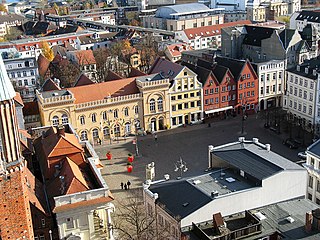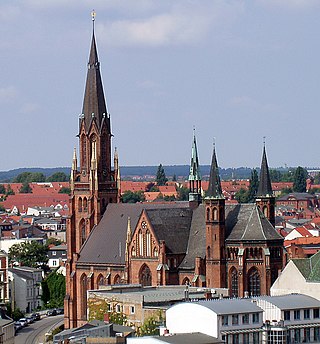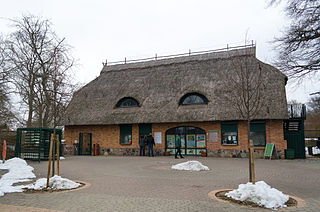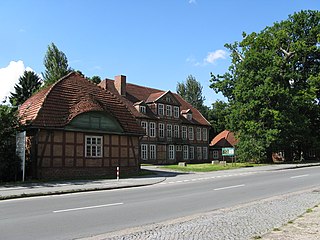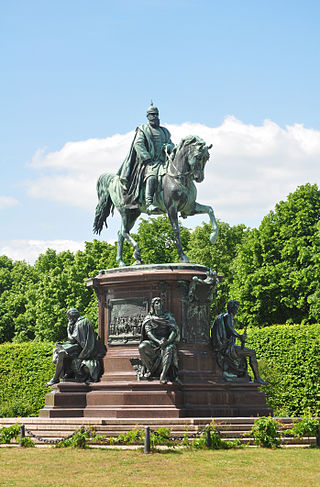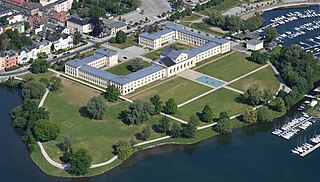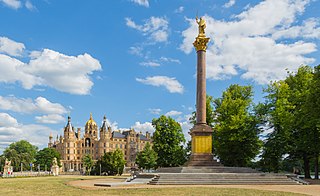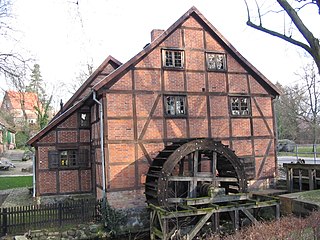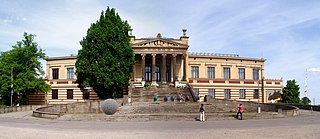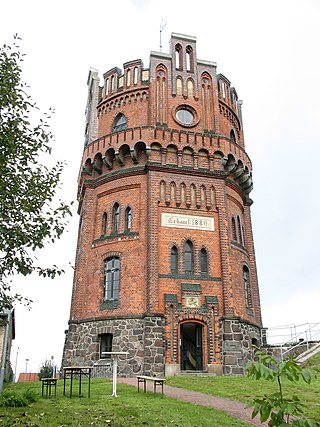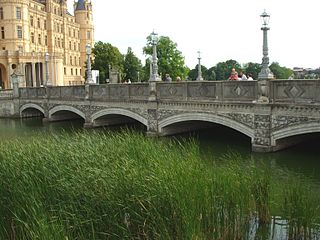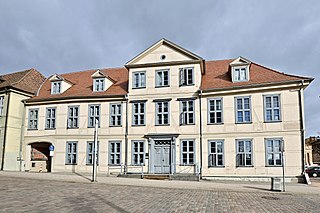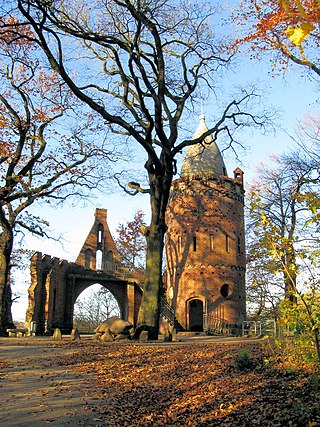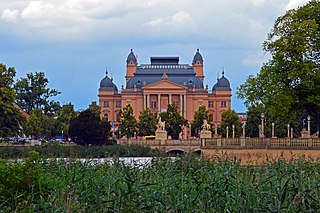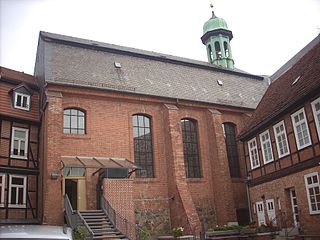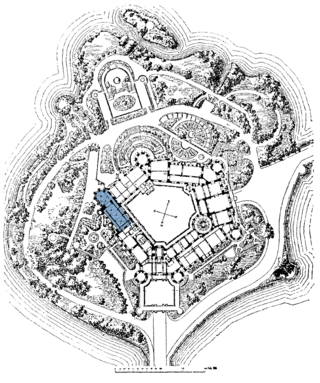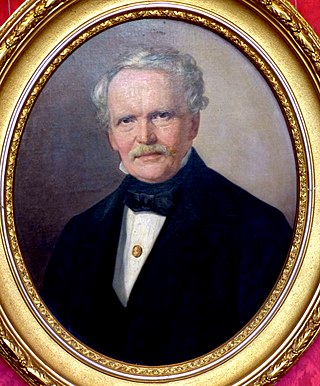20 Sights in Schwerin, Germany (with Map and Images)
Legend
Welcome to your journey through the most beautiful sights in Schwerin, Germany! Whether you want to discover the city's historical treasures or experience its modern highlights, you'll find everything your heart desires here. Be inspired by our selection and plan your unforgettable adventure in Schwerin. Dive into the diversity of this fascinating city and discover everything it has to offer.
Sightseeing Tours in Schwerin1. Löwe
The market in Schwerin is a rectangular historic market square in Schwerin's old town, whose history dates back to the founding of the city in 1160. To distinguish it from the Schelfmarkt of the Neustadt (Schelfe), which was independent until 1832, it is also known as the Old Town Market. It is located south of the cathedral. Four of the buildings surrounding the square are listed buildings.
2. Paulskirche
St. Paul's Church is a neo-Gothic church in Schwerin, Germany. It belongs to the Evangelical Lutheran Church of Peace in Schwerin in the Wismar Priory, Mecklenburg Church District of the Evangelical Lutheran Church in Northern Germany.
3. Zoo Schwerin
The Schwerin Zoological Garden is a medium-sized, year-round zoo with about 2118 animals in 144 species and almost 217,000 visitors annually in the south of the state capital Schwerin. The zoo stretches between the southern shore of Lake Schwerin, the Fauler See and the residential area of Großer Dreesch and covers an area of about 25 hectares. It is managed in the corporate form of a gGmbH.
4. Jagdschloss Friedrichsthal
The Friedrichsthal Hunting Lodge is a former hunting residence of the Grand Duke of Mecklenburg, Friedrich Franz I, in Friedrichsthal, a present-day district of Schwerin. The hunting lodge and the cavalier houses that formerly belonged to the castle complex are listed as historical monuments.
5. E-Werk
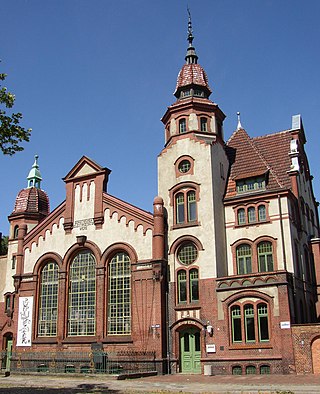
The former municipal power plant on the northeast bank of the Pfaffenteich in the city of Schwerin was used for the production of electricity from 1904 to 1969 and was in operation as a switchgear in the municipal power grid until 1999. The building, which is a listed building, has been used for cultural purposes since 1998 – as a venue for the State Theatre, the Puppet Theatre, the Fritz Reuter Stage and for the Kunstverein für Mecklenburg und Vorpommern in Schwerin.
Wikipedia: Städtisches Elektrizitätswerk (Schwerin) (DE), Website
6. Friedrich Franz II
The equestrian monument to Friedrich Franz II in Schwerin was inaugurated in 1893 in the Neo-Baroque style according to designs by the sculptor Ludwig Brunow. It is located in Schwerin's castle garden very close to the castle and has thus been part of the Schwerin UNESCO World Heritage Residence Ensemble since 2024.
7. Schweriner Marstall
The Marstall of the Mecklenburg-Western Pomerania state capital Schwerin is located on a small headland, the former Wadewiesen, today Marstall Peninsula, on the western shore of Schwerin's inner lake on Werderstraße. The area was integrated into the grounds of the Federal Garden Show 2009 in 2009. Since 1990, the Marstall has housed the Ministry of Education, Science and Culture, from 1997 temporarily parts of the Technical State Museum and since 2009 the Ministry of Labour, Equality and Social Affairs.
8. Siegessäule
The Victory Column on the Old Garden in Schwerin is a "monument to the Mecklenburgers who remained in the war of 1870/71". On the column stands the allegorical figure Megalopolis, which personifies the state of Mecklenburg. The complex is an important historical monument of the state of Mecklenburg-Western Pomerania and as such is a listed building.
9. Schleifmühle
The Schwerin grinding mill is an 18th-century grinding mill driven by an undershot water wheel for the processing of stones in Schwerin, the capital of Mecklenburg-Vorpommern, Germany. After the operation ceased, the mill was expanded into a museum in 1985. The building is a technical cultural monument.
10. Staatliches Museum Schwerin
The Staatliches Museum Schwerin is an art gallery and museum in Schwerin in Germany. It was established by Frederick Francis II, Grand Duke of Mecklenburg-Schwerin in 1882 its historicist Haupthaus as the Staatsgalerie next to the Staatstheater. Its other locations are opposite the Schweriner Schloss and in the former residences at Schloss Güstrow and Schloss Ludwigslust.
Wikipedia: Staatliches Museum Schwerin (EN), Website, Opening Hours
11. Wasserturm Schwerin-Neumühle
The water tower is located in the Schwerin district of Neumühle on the street "Am Wasserturm". With its location on the 86.1 m high vineyard, it is located on the highest point of the city of Schwerin and is still integrated into the drinking water network as a pressure equalization tank.
12. Schlossbrücke
Die Schlossbrücke Schwerin ist eine 48 Meter lange, bogenförmige Brücke, die nördliche der beiden Wasserverbindungen zwischen dem Schweriner See und dem Burgsee überspannt und das Schweriner Schloss auf der Schlossinsel mit der Stadt Schwerin verbindet.
13. Feuerwehr-Museum
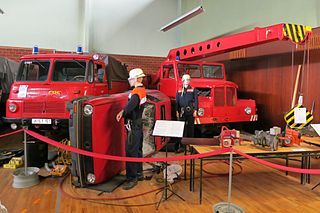
The International Fire Brigade Museum Schwerin is Germany's largest fire brigade museum. It is located in the hall at the television tower in the Neu Zippendorf district of the Mecklenburg-Western Pomerania state capital Schwerin, directly at the television tower.
Wikipedia: Internationales Feuerwehrmuseum Schwerin (DE), Website
14. Altes Palais
The Old Palace in Schwerin, the capital of Mecklenburg-Western Pomerania, is a half-timbered building on the Old Garden. The building, which was once used as a ducal residence, is now the seat of the state parliament administration. It is a listed building.
15. Reppiner Burg
Reppin Castle is an artificial ruin, which was intentionally built in 1907 as an incomplete castle complex on the southern shore of Lake Schwerin. Today it lies within the urban area of Schwerin in Mecklenburg-Vorpommern.
16. Mecklenburg State Theatre
The Mecklenburg State Theatre is the principal theatre of Schwerin in Germany. Its main theatre seats 650 people and is used for the performance of plays, opera, musical theatre and ballet. Designed by Georg Daniel, the present building was built between 1883 and 1886 after the previous court theatre had been destroyed by fire in 1882. It was inaugurated on 3 October 1886 with a performance of Gluck's Iphigénie en Aulide with Marie Wittich in the title role. The complex also includes the State Museum in Schwerin and a 240-seat concert hall, now used for performances of chamber works.
17. Schelfkirche
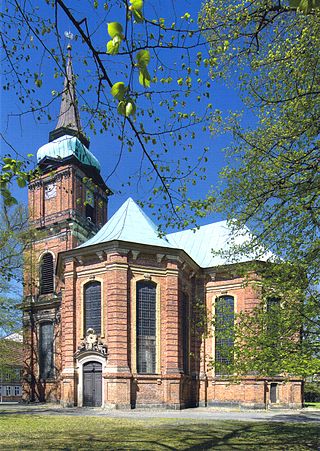
The Church of St. Nikolai, also known as the Schelfkirche, is a Protestant religious building in the Schelfstadt district of Schwerin. The brick building was built in the Baroque style between 1709 and 1711 on behalf of Duke Friedrich Wilhelm I according to a design by Jakob Reutz. It is one of the few baroque churches in northern Germany and the first large post-Reformation church building in Mecklenburg. As part of the Schwerin Residence Ensemble, it was inscribed in the UNESCO World Heritage Site in 2024.
18. Propsteikirche Sankt Anna
The Provost's Church of St. Anna in Schwerin is the mother church of all Catholic churches in Mecklenburg and was for a time the seat of an auxiliary bishop of the Archdiocese of Hamburg in his function as episcopal vicar in Mecklenburg.
19. Schlosskirche
The castle church in Schwerin Castle is today the church of a congregation of the Evangelical Lutheran Church in northern Germany. It combines building elements from the Renaissance and Neo-Gothic periods.
20. Demmler Mausoleum
Georg Adolph Demmler was a German architect, socialist and politician, first of the left-liberal South German People's Party (DtVP) and later of the Socialist Workers' Party of Germany (SAP). As an architect, he created many buildings that still shape the cityscape of Schwerin today. Some are listed as historical monuments.
Share
How likely are you to recommend us?
Disclaimer Please be aware of your surroundings and do not enter private property. We are not liable for any damages that occur during the tours.
